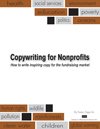When talking to prospective major donors, you have several obstacles to overcome. Because like any “buyer”, major donors are looking for value.
 They also need to be convinced your nonprofit is well run today and into the future … and that you’ll use their money wisely. That it won’t be wasted and flushed down the bad-management drain.
They also need to be convinced your nonprofit is well run today and into the future … and that you’ll use their money wisely. That it won’t be wasted and flushed down the bad-management drain.
Yes, as a charity you must persuade and convince major donors you’ll do right by those you serve and thereby you’ll do right by the donor.
You need to convince prospects that you won’t be another Long Island College Hospital and squander away $135-million. It was supposed to be an endowment “… to be held in perpetuity” according to the wills of Donald and Mildred Othmer.
This sad story, “…experts say … provides a cautionary tale for wealthy individuals who hope their gifts will make a long-term impact.”
According to an article in The Wall Street Journal, the Othmers were originally from Omaha, Nebraska. They were married in New York in 1950. Then in 1961 they each invested $25,000 with Warren Buffett and they stayed with him.
Although they lived modestly, by the time of their deaths (Donald at age 91 in 1995, and Mildred in 1998 at age 90), the value of their investment was $780-million. They donated it to about a dozen charities believing it would sustain them for generations. Their “goal was to create permanent funds for the institutions they loved to ensure they would survive and grow.”
Yet less than 20 years later the Long Island College Hospital has all but squandered its generous share away. How sad. The hospital will soon close. Per the article, “doctors, nurses and community activists say the treatment of the Othmer gift illustrates a pattern of financial mismanagement on the hospital’s part.”
In my opinion, it’s all too easy to spend someone else’s money. To dip into an endowment where the capital should never be touched … and use it to solve a problem instead of working hard to find other solutions. And once started down that path, well, the hospital is closing.
Warren Buffett – who often dined with the Othmers – is quoted as saying, “The Othmers did not spend huge sums on themselves but instead wanted the money to go back to society. And at least one institution couldn’t wait to change the terms under which it received the money.” Buffett added, “I would think if the Othmers were alive they would feel betrayed.”
I know I would feel betrayed. But then I’m just another one of those donors.
Understanding Major Donors and Self-Made Millionaires
.
If your charity is courting major donors – including the 7-figure donors – I recommend you also read an article from Forbes on Chuck Feeney, the billionaire who is trying to go broke.
Mr. Feeney is 81 and “over the last 30 years he’s crisscrossed the globe conducting a clandestine operation to give away a $7.5 billion fortune. His foundation, the Atlantic Philanthropies, has funneled $6.2 billion into education, science, health care, again and civil rights…”
According to Forbes, “few living people have given away more, and no one at his wealth level has ever given their fortune away so completely during their lifetime. The remaining $1.3 billion will be spent by 2016, and the foundation will be shuttered in 2020.”
Two of the world’s richest men, Bill Gates and Warren Buffett, credit Feeney as a major inspiration for both the $30 billion-strong Bill & Melinda Gates Foundation and the Giving Pledge, which has enlisted more than 90 of the world’s richest to (eventually) grant half their wealth to charity. “Chuck is fond of saying that none of us has all the answers,” says Gates, “but I know that Melinda and I have learned a great deal from him in the time we’ve spent together.”
To help understand their mindset, know that they choose causes that will maximize the impact of each dollar pledged.
In fact, Feeney forces charities to compete for his cash. He requires detailed business plans with clear milestones and full transparency. What’s more, if a project runs off course, Feeney cuts funding. Somehow I doubt the Long Island College Hospital could have ever convinced Feeney to be a donor for them.
The Forbes article goes on to say: To further maximize return, Feeney leverages every dollar the foundation gives–using the promise of substantial gifts to force governments and other donors to match. He works the same tactic with other wealthy people and development offices. Feeney never slaps his name on a library or hospital, since he can collect additional money for the project from more egocentric tycoons who gladly pay millions for the privilege.
When spending money Feeney obsesses over value. With regard to costs, he loathes waste.
From what I’ve read about entrepreneurs and self-made millionaires and billionaires like Feeney, all the traits mentioned above are common. So as a nonprofit you have your work cut out for you. But do the job right and you can acquire 7-figure gifts from major donors. And please, honor their wishes as you use the money they have entrusted to you and those you serve.
Related posts:
Best time to ask a Major Donor for that first gift
How to create favorable impressions with Major Donor prospect pool
Terrific way to cultivate Major Donors includes this direct mail touch
The reasons why people give. And the type of information you must tell them time and again to reassure major donors – as well as mid-level and low dollar donors – so they’re comfortable supporting your cause. So they trust you and your business savvy.

{ 1 trackback }
{ 0 comments… add one now }